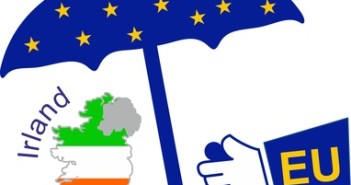We all know that politics makes strange bedfellows, but in the case of Britain negotiating with EU over Brexit, those bedfellows could be no stranger.
After months of stalled talks, Britain’s Theresa May and EU President Jean-Claude Juncker may have pulled a rabbit out of the hat. For what seemed a lifetime, the two sides tussled over the fine print until finally, to the surprise of many international observers the contenders breathed a sigh of relief – agreement! OK, it was only a small victory, but one that was nonetheless needed and wanted by both sides.
The recent breakthrough came on December 7th when May and Juncker signed a 15-page report specifying the actual progress that both sides had made in the preceding weeks and months of negotiation. The key sticking point was the border between Northern Ireland (for which read UK), and the Republic of Ireland (for which read EU).
Ireland is the only geographical location where the UK shares a physical land border with an EU country, and Mrs. May was determined to secure that border and make it impervious to influences from Irish Republic. Naturally, the EU was opposed to such a move. Finally, after long negotiations, a flexible, more compliant agreement was reached where both sides concurred to make the border “soft”. Doubtless, at the heart of the negotiations was the concern that a hard border, which would undoubtedly harm residents of the Republic, might fan the flames of political discord between the two halves of the Emerald Isle – not something any side wanted to see.
Strangely, the December accord appears to agree to keep Ireland united with regards to its commitment to EU regulatory obligations. This includes Northern Ireland continuing to follow the rules of the European single market and customs union, a giant concession supplied by the May government.
May has also confirmed that the rights of EU citizens remaining in the UK, and those Brits who have elected to live in Europe, will have their full civil rights protected. In May’s words, the citizens of both blocs should be able to “go on living their lives as before”. But, as Donald Tusk, the European Council said, “We all know breaking up is hard, but breaking up and building a new relationship is harder”. Clearly, neither side is out of the water yet.
The focus is now on how to define the trading relationship between the two territories. What seems likely is that negotiations will focus more on goods than services, similar to a Canada-style deal that exists with the EU at present. Cynics noted that this latest agreement, which has taken the best part of a year to reach, was the “easy” part. And there’s a long way to go before we’re out of the woods.
And then, of course, there is the alimony. This currently ranges anywhere between 40 and 65 billion Euros – not an insubstantial chunk of change. And with May’s political opponents skulking around the House of Commons, the lower the payment, the better her chances of staying politically extant.
Finally, there is the sticky issue of those Europeans who seek to maintain residence in the UK. The current settlement suggests that those Europeans living in the UK can continue to live there and benefit from the social umbrella that keeps them off the streets.
One concession that the EU did make was agreeing to drop its insistence that any divorce settlement be conducted under EU auspices, and particularly within the confines of the European Court of Justice. It’s all give and take, and the latest agreement is testament to the fact that both sides have erred on the side of compromise.
